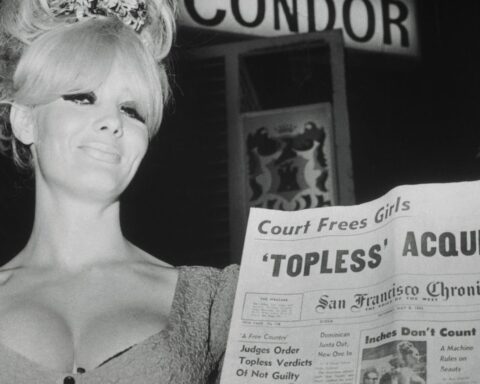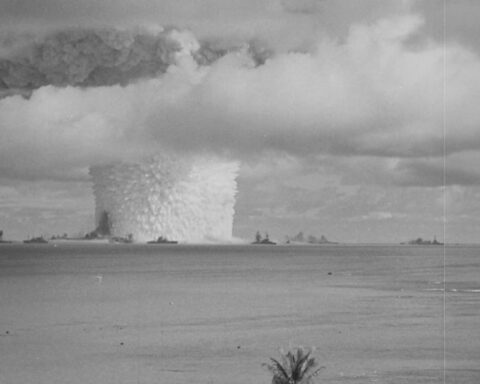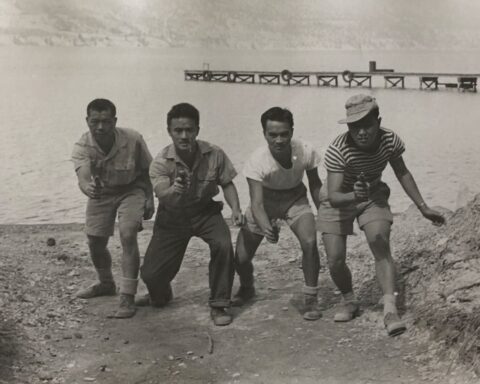For independent documentary filmmakers, one of the most relevant panels at November’s 2005 World History Congress in Rome was, “Who Owns History?” Organized by ace researcher Elizabeth Klinck, the panel confronted the phenomena of “clearance hell.” On the panel were assorted experts—a respected researcher, the director of ITN archives, the world’s fastest-growing commercial archives (685,000 hours from Reuters, Gaumont, Universal, Pathe, and others), the president of the Italian state archives, and Pat Aufderheide, a crusading academic with a highly developed initiative that could give independent filmmakers and producers a copyright break.
Pat was the last to speak. The archivist had raised aspects of clearance hell—sole owners (like sports organizations) censoring their archives, and expensive preservation needs, therefore expensive archives. The Commercial Director of ITN Archive had extolled large scale, one-stop archive shopping: the choice might not be ideal, but volume meant bulk discounts and only one person to deal with for clearing all additional rights. The President of Luce, a sponsor of the Congress, had pitched his videographic wares, everything digitized, delivery fast.
For all, the accepted premise was: archives are owned and must be bought.
Pat, the people’s heroine, wiry, high-energy, with short-cropped red hair and an electric focus, blew that premise out of the water. As director of the Center for Social Media at the American University, in alliance with 20 groups of US independent filmmakers, she has defined a four- point “Fair Use” criteria for free use of archival material, which releases filmmakers from the total stranglehold of clearance hell.
The premise is: Fair Use is a key part of the social bargain at the heart of copyright law in which, as a society, we concede certain limited (my italics) property rights to ensure the benefits of creativity to a living culture. Fair Use expresses the core value of free speech within copyright law. Documentary filmmakers should have the same kind of access to copyrighted materials as those cultural and historical critics who work in print media and news.
A master of the bullet clip, Pat began by saying, “we are working the interface of intellectual property rights and access.” Her research unearthed a profound crippling effect on documentarians’ creativity due to sole sourcing, self-censorship, cost. “Copyright protects, and filmmakers are concerned about protecting their own work, but copyright can become censorship. 40% of all photographic archives are now owned by Corbis and Getty; the others are small archives. Consolidation in archives is becoming a monopoly. It is a widely held concept that large copyright holders cannot totally control copyright, or else there is a commercial control of culture.”
One flexible issue in the copyright/access dilemma was Fair Use. In a nutshell, the criteria established for Fair Use by US filmmakers and the Center for Social Media are:
1. Employing copyright material as the object of social, political, or cultural critique. Outfoxed used more than 50% of Fair Use material from Fox, in a documentary directly criticizing Fox TV style.
2. Quoting copyrighted works of popular culture to illustrate and argument or point.
3. Capturing copyrighted media content in the process of filming something else.
Pat gave the example of a filmmaker who had captured NFL footage while filming his characters and did not pay. In another documentary, the filmmaker freely used a CBS Nixon campaign featuring his subject, “and didn’t pay because his use was similar to a historian quoting primary sources.”
4. Using copyrighted material in a historical sequence.
Pat’s catch words for Fair Use are: transformation, commentary, context, and taking only as much as needed to make a point. She warned that filmmakers must identify and credit the copyright source. “Large copyright holders are not interested in litigating because that would draw attention to Fair Use.” When there has been litigation, US courts have been overwhelming supportive of Fair Users, “because copyright material will be under copyright for five generations.”
During the question period, a researcher warned that the CBC archives is in imminent danger of being represented by the BBC, which now charges independent producers 30% substantially more than the CBC for its material. An independent filmmaker raised the problem of Errors and Omissions (E&O) insurance and the anal restrictions of E&O lawyers. CBC and other networks have their own lawyers and insurers, but independents are often under E&O tyranny. Pat is currently meeting with E&O reps and suggested filmmakers and producers pressure their lawyers to move toward Fair Use.
People gathered after the panel to talk and strategize with Pat. Canadians seemed fired with the mission of establishing Fair Use as a working principal. DOC (the Documentary Organisation of Canada) the CFTPA (the Canadian Film and Television Production Association) and the Quebec producer’s association (APFTQ) were proposed as rallying grounds for establishing a Fair Use application in Canada. For many filmmakers, this would be just what the budget ordered.











